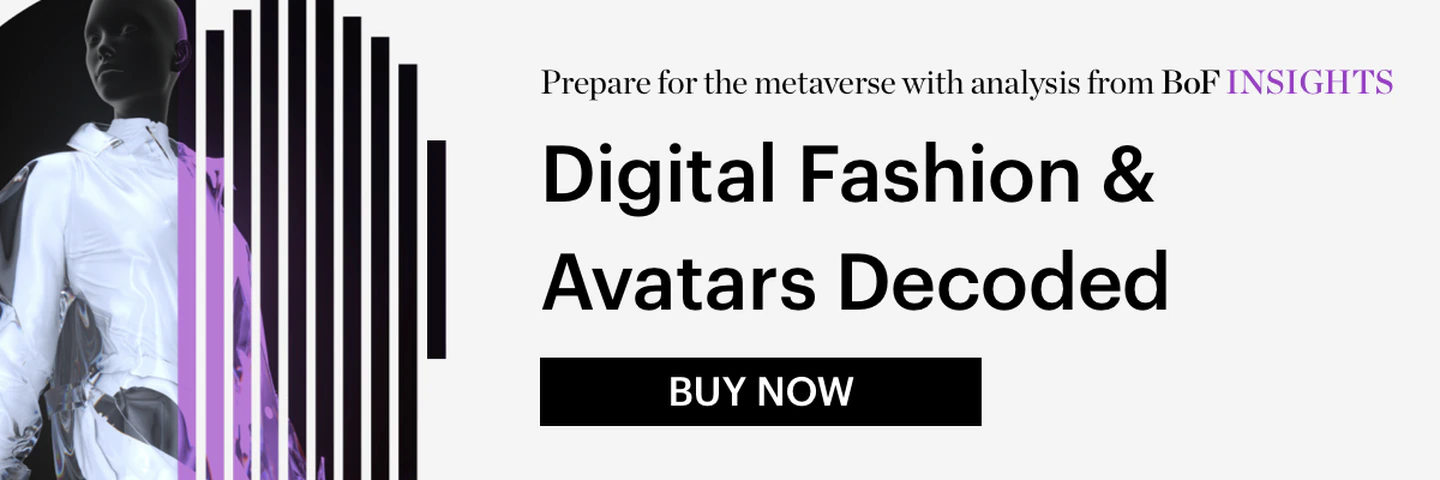
Speculators are dropping millions of dollars on digital plots of land, in a bet these empty patches of virtual real estate will someday be home to thriving online shopping districts.
In November, a subsidiary of the crypto-investment site Tokens.com called Metaverse Group spent $2.4 million on a large plot in the Fashion Street district of Decentraland, a virtual world powered by the Ethereum blockchain. It followed on Decentraland purchases by other groups such as Boson Protocol, which bought land to build a virtual mall. Republic Realm opened a small shopping district called Metajuku in Decentraland and has also dropped $4.2 million for space in The Sandbox, another blockchain-based online world.
Despite the high-tech trappings, these deals have more than a little in common with past retail land rushes, whether it’s mall developers snapping up farmland in the 1960s or the transformation of Manhattan’s Soho into a destination for luxury shoppers — for these investments pay off, they’ll need brands and their customers to buy in.
Brands so far haven’t hurried to put down stakes, with one notable exception. Adidas recently secured its own piece of real estate in The Sandbox. It declined to provide specific details of its plans, including whether they entail selling products, but said in a statement that it is working to fill the space with “exclusive content and experiences.”
Generally speaking, the vision for these shopping districts is to take e-commerce from two dimensions to three, using the world-building capabilities seen in video games to create a new variety of online shopping destinations.
“If you think about cities in general, in New York you have Fifth Avenue and in LA you have Rodeo Drive. We want to create the equivalent of those streets in the metaverse,” Andrew Kiguel, co-founder and chief executive of Tokens.com, told BoF.
These projects are still in their early stages. The Sandbox, which along with Decentraland is among the most prominent of the dozens of new blockchain-based virtual worlds appearing, isn’t live to the general public yet and only recently opened to a limited number of players after four years in development.
If you think about cities in general, in New York you have Fifth Avenue and in LA you have Rodeo Drive. We want to create the equivalent of those streets in the metaverse.
There are also mechanics still to be worked out. Right now, customers can easily sort through hundreds or thousands of items on any website. That experience doesn’t easily translate to a 3D space, and the success of Decentraland or The Sandbox likely depends on whether developers can come up with an equally enticing alternative way to shop.
The emerging virtual shopping districts also face competition from online games and social networks, which are miles ahead in incorporating shopping. On the other hand, games like Fortnite and Roblox arguably show the potential for virtual shopping. In November, Morgan Stanley analysts estimated that social gaming — “e.g., online games and concerts attended by people’s avatars,” they explained — could contribute as much as €20 billion ($22.6 billion) to the luxury market alone by 2030 through revenue-sharing deals and sales of virtual items. Digital worlds like Decentraland, which hosted a music festival that drew more than 80 artists and nearly 50,000 attendees, fit in that category.
Brands may be less interested in picking winners than exploring what’s possible.
“I don’t think it’s necessarily a negative thing to be experimenting and to understand how a brand can be part of these virtual worlds,” said Emma Chiu, global director at Wunderman Thompson Intelligence, the consultancy and creative agency’s innovation think tank. “At some point in the next year to five years, they will need to have some sort of brand presence in these virtual spaces.”
Luring Brands
Metaverse Group is using its property to host a Metaverse Fashion Week from March 24 to March 27 in partnership with Decentraland and UNXD, the market for non-fungible tokens (NFTs) that worked with Dolce & Gabbana on its sale of a nine-piece NFT collection last year. There will be runway shows, pop-up shops and after-parties, the company said.
No participating brands have been announced yet, however. Kiguel said they’ve had conversations but they’re still in the beginning stages of organising the event. His hope is they’ll top the success of Decentraland’s music festival.
You have to sign a lease and then you have to build a video game.
A fashion show is one thing; convincing brands to lease space in a virtual shopping district is a bigger leap. The rent on a virtual store may be cheaper than a real one, but that doesn’t factor in the time-consuming process and technical capabilities fashion companies need to build their digital space.
“It’s not like leasing in the real world,” said Republic Realm chief executive Janine Yorio. “You have to sign a lease and then you have to build a video game.”
Fad or Future?
Virtual shops have been attempted before, notably in the game Second Life, where brands including Adidas and American Apparel had stores in the mid-2000s. The game never grew beyond a niche audience, however. Recently, founder Philip Rosedale told Axios they overestimated how much time people would want to spend in the virtual world.
When Republic Realm’s Metajuku launched in mid-2020, two brands had signed leases: DressX and Tribute, both makers of digital garments. At the time, Yorio expected about two dozen other brands to join in the next three to six months. That didn’t happen, and Republic Realm is no longer signing leases.
Yorio said creating for the metaverse takes time and the talent available to build these spaces is in short supply. Republic Realm is focusing its resources on projects with greater potential returns.
“In terms of press and education, Metajuku has been a big success, and it’s unquestionably a proof of concept for what the future of metaverse commerce could look like,” she said.
Technology has evolved since Second Life’s launch, and consumers are spending far more time online, Chiu noted. She believes younger generations like Gen Alpha — the one after Gen-Z — will grow up seeing shopping in a virtual world as the norm.
Yorio contended that the advent of NFTs, which allow digital assets to be logged and tracked on a blockchain, also enabled a new type of ownership. They hypothetically allow you to use an asset anywhere online, though how items could work across different platforms, each with its own appearance and functionalities, is a technical puzzle still being solved.
Al Dente, a creative agency that counts a number of top luxury labels among its clients, is one of the smaller players to have bought a plot in The Sandbox. Founder Patrizio Miceli said they want to create an entertainment and e-commerce district for luxury brands and show them the enhanced possibilities for storytelling.
He’s unfazed by stumbling blocks like the visual style of these virtual worlds, which tend to be a bit cartoonish, in part to mitigate the demands on internet bandwidth and processing power needed for users to run more realistic graphics.
“It was the same thing when e-commerce was coming out,” he said. “They said, ‘Look, we cannot sell things on e-commerce… Everybody is selling now on the internet and it feels very natural.”



